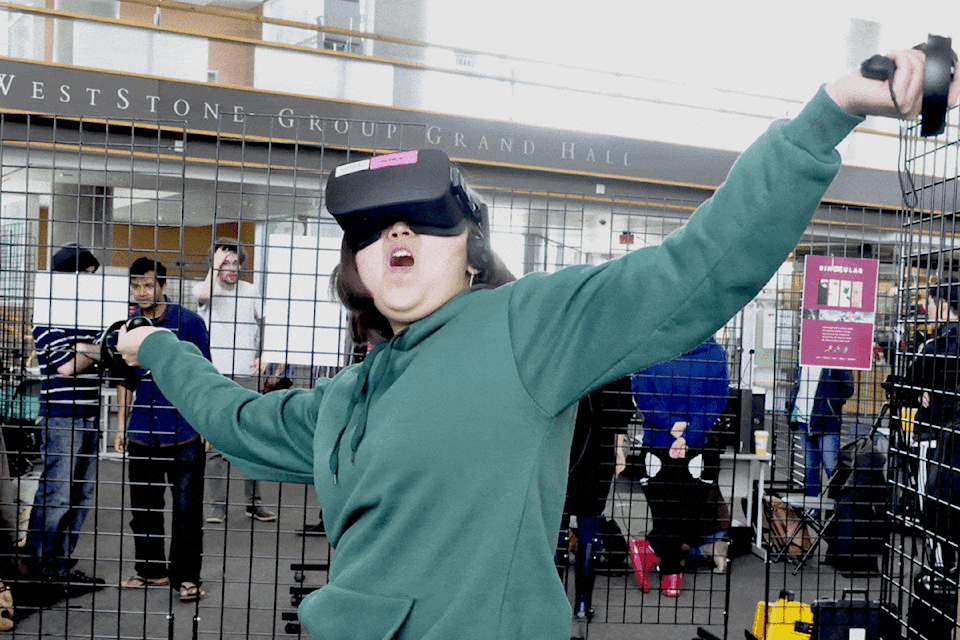From playing futuristic golf in space to exploring exotic wildlife to painting under the sea, the latest virtual reality techniques were showcased at SFU Surrey on Tuesday.
The “cutting-edge” experiences were brought to life by fourth-year students in the university’s School of Interactive Arts and Technology (SIAT) in an “Immersive Environments Spring Showcase” on April 17.
Using Oculus and HTC headsets, visitors were given the opportunity to dive into another world.
“Here at SFU SIAT, we are pioneering many new VR techniques,” said professor Steve DiPaola in a release.
“These include bringing AI (Artificial Intelligence) into VR with our Google/Knight Foundation grant in VR/Journalism to create new ways to hear from and empathize with anonymized witnesses. With our new VR grant in health, VR/AI talking and listening 3D chatbots are being used as health coaches, for a variety of purposes, including helping the elderly.”
DiPaola said SIAT researchers have a mandate to “make tech more humanizing by bringing the next level of bio-sensing into VR.”
“So it is exciting to bring the undergraduates into this research forefront, allowing them to garner high-end tech jobs here and in Silicon Valley,” he added.
Besides exploring innovative VR applications, DiPaola’s graduate students are landing jobs in the emerging field with such companies as Amazon, Electronic Arts, Pixar, and new VR/AI startups.
DiPaola is known internationally for his AI-based computer graphics research, modelling how the creative human mind works into many research and commercial products and video games. He created the facial system for the Electronic Arts Maxis game “The Sims” and was co-creator of a 3D app called FaceFries launched by Apple in 2014.
His most current research involves new forms of thinking virtual robots—realistic 3D virtual human chatbots that can reason, talk and gesture with users for many learning and health applications.
